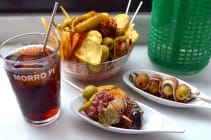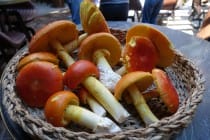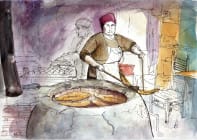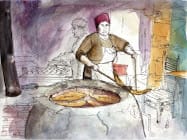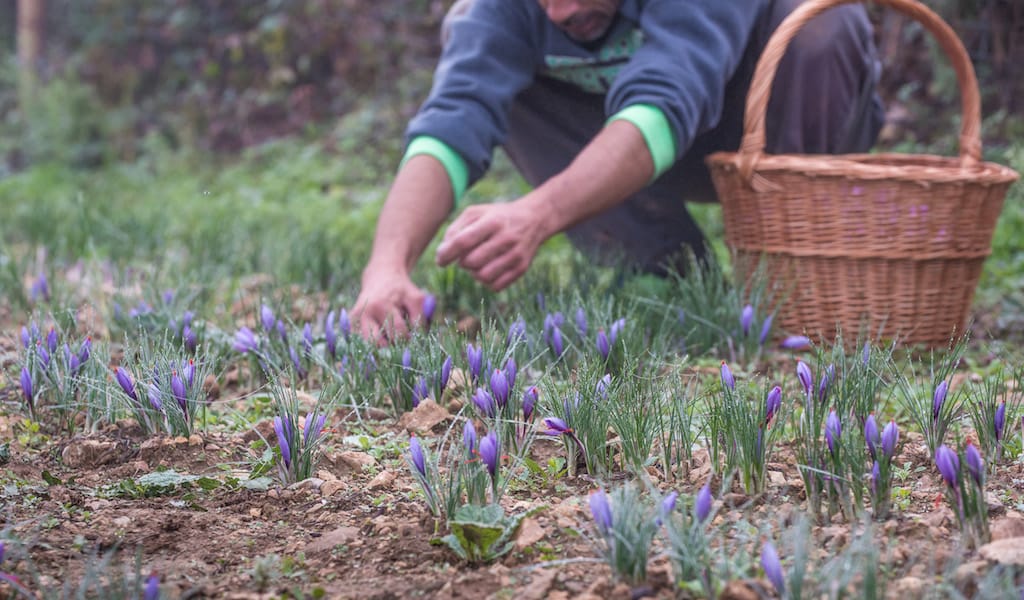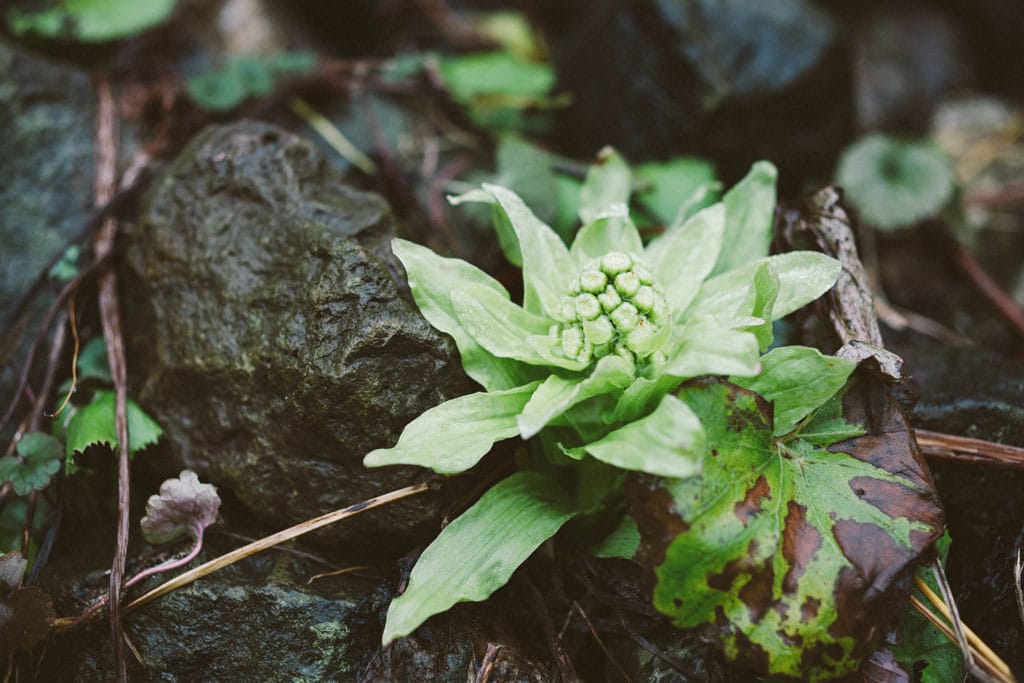Wild greens or horta (χόρτα) are an ancient and still very important ingredient in traditional Greek cuisine (and happen to have exceptional nutritional value to boot). Every season brings different varieties: some more bitter, some milder and sweeter, some naturally salty, all with different textures and shades of green. Some of the most widely known horta are dandelion (radikia), sorrel (about 20 different varieties grow in Greece), purple amaranth (vlita, or Amaranthus blitum), sow thistle (zochos), wild arugula, borage, chicory, Mediterranean hartwort (kafkalithra or Tordylium apulum), mustard greens (vrouves), nettles, shepherd’s needles (myronia, or Scandix pectin-veneria), wild fennel and common reichardia (Reichardia picroides).
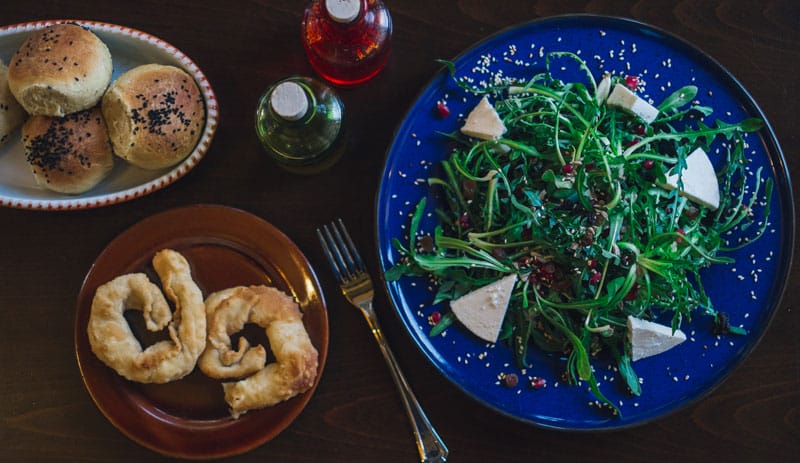
Almost every single taverna around Greece includes horta in the salad section of the menu. These boiled greens served with virgin olive oil, sea salt and plenty of freshly squeezed lemon juice are one of the most common salads enjoyed throughout the year, usually with fish, but sometimes also with meat. When eating out, Greeks typically ask the waiter what type of horta the restaurant serves, as they know it depends on season, region and availability of each variety. Certain varieties can be eaten raw and can be combined with other greens or vegetables, cheese or fresh herbs. For example, purslane (glystrida or andrakla), which grows in the summer, tastes amazing with tomatoes, red onions and feta cheese. It’s worth visiting a farmers’ market while in Athens, and there, one can see the wide variety of fresh seasonal horta on sale.
It is quite common for Greeks, especially of older generations, to drink the liquid in which they’ve boiled their greens as a tea, adding some lemon juice and a few drops of olive oil according to taste. This is widely considered an effective detox drink.

Apart from salad horta is also used in pies, as in the traditional hortopita. The season, region and cook determine what greens will be included, whether there will be any cheese in the mix and the type of pastry that will encase the filling. There are numerous regional pies with specific local greens around Greece. The pispilita from Epirus in the northwest is a simple recipe made with nettles and cornmeal; batsaria from Yiannena includes seasonal greens, fresh aromatic herbs and milk, in addition to cornmeal. Tsouknidopita (tsouknida means “nettle” in Greek) comes from Veroia in the north: traditional hand-rolled olive oil pastry is filled with lightly sautéed nettles and topped with sesame seeds. The mixed seasonal greens in psiantra from are first covered in a cornmeal batter and then placed in hand-rolled olive oil pastry.
The island of Crete is famous for typical pies such as kaltsounia, which are individual pan-fried half moons with all kinds of fillings, including wild greens and herbs, and marathopita, a very light, flat, round pie filled with wild fennel greens, onion and sorrel and lightly pan fried.
Horta are also added to omelettes and scrambled eggs or made into giachni (γιαχνί), lightly sautéed plain with herbs and onions or tomatoes. Traditional Greek fricassee is a very hearty, beloved dish made with meat (usually lamb, goat, rabbit or pork), wild greens, fresh herbs and sometimes lettuce, and then finished with an egg and lemon sauce (avgolemono). Seasonal greens are also added to soups, risottos, pasta and other dishes for an extra kick of flavor.
Below, we’ve rounded up some of our favorite places to eat horta around Athens.
Seychelles
This hip taverna in central Athens offers a variety of creative meze and an interesting selection of cheese, smoked fish and cured meats from around Greece. On the menu is a tasty salad with boiled stamnagathi, a type of wild green from the island of Crete, served on traditional carob rusks and dressed in the typical way with olive oil and lemon juice. There might also be sautéed wild greens with broad beans (gigantes).

Kitsoulas
A legendary family taverna in Chalandri, operating in the same location since 1946, Kitsoulas is quite busy every day and especially at midday, when people working in the area come by for a delicious and reasonably priced lunch. The menu varies, as the taverna offers many daily specials, but there’s always a seasonal horta salad. If you come before 2 p.m., you might be lucky enough to get some of Kitsoulas’s traditional lamb or pork fricassee. We especially recommend Sunday lunch here.
Pites tis Sophias
Just a couple of years ago three siblings decided to start this small pie shop in Palio Faliro using their mother’s recipes. Every day they bake 24 different kinds of savory and sweet pies, including two types of hortopita – one with feta and another with just greens and herbs.
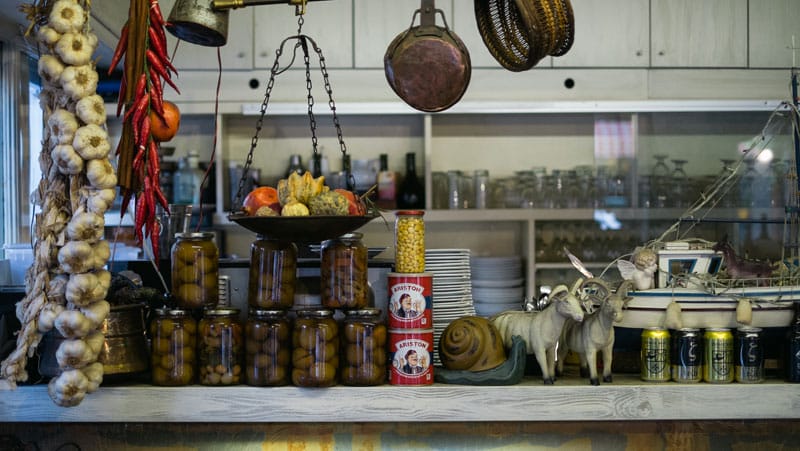
Katsourbos
This Cretan taverna in Pagrati ships all its ingredients in from Crete and all its bread and pasta are made in-house. Among the horta offerings are kaltsounia pie; a salad with raw stamnagathi, pomegranate, dried figs, almonds and Cretan mizithra cheese; pasta with stamnagathi sautéed with fresh clarified butter (staka) and topped with mizithra; and the lamb with stamnagathi and lemon sauce.
 October 3, 2023 Harvest Week
October 3, 2023 Harvest Week
Saffron may be most commonly associated with Iran, currently the world’s largest […] Posted in Barcelona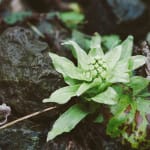 May 2, 2023 Spring Gone Wild
May 2, 2023 Spring Gone Wild
One of the great joys of spring in Japan is anticipating the appearance of sansai, or […] Posted in Tokyo September 30, 2021 Harvest Week
September 30, 2021 Harvest Week
In the sections of China’s Jiangsu Province where Huaiyang cuisine reigns supreme, […] Posted in Shanghai
Published on April 25, 2016
Related stories
October 3, 2023
BarcelonaSaffron may be most commonly associated with Iran, currently the world’s largest producer of this costliest of spices, but it has a long and storied history across the Mediterranean, particularly in Spain. Once an important saffron producer and trading center, Catalonia has seen a resurgence in saffron cultivation in recent years. The spice, which comes…
May 2, 2023
TokyoOne of the great joys of spring in Japan is anticipating the appearance of sansai, or mountain vegetables. When cherry blossoms begin to flutter on warming breezes, hikers take to the hills to forage for the first wild edibles. Supermarkets mount special displays of packaged (and unfortunately often hot-house-raised) young sprouted leaves, shoots and tubers.…
September 30, 2021
ShanghaiIn the sections of China’s Jiangsu Province where Huaiyang cuisine reigns supreme, autumn is marked not by yellow and red foliage or falling temperatures. The change in seasons instead comes when restaurants post hairy crab (大闸蟹 Dàzháxiè) menus and shops selling baked goods the rest of the year pivot to aquariums full of the live…

















